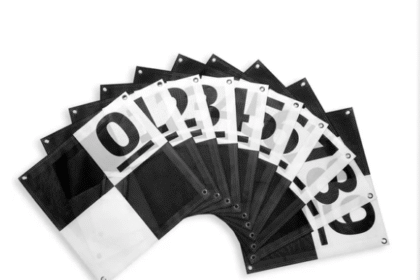As housing costs rise and multigenerational living becomes more common, accessory dwelling units (ADUs) have emerged as a practical solution for many homeowners. Whether you’re looking to house aging parents, generate rental income, or simply increase your property’s value, building an ADU can be a strategic move. However, before you begin construction, it’s essential to understand ADU Financing Options, which can significantly affect your budget, repayment structure, and long-term financial planning.
Navigating the world of financing can be daunting, especially if you’re unfamiliar with construction loans or government-backed lending programs. This guide aims to walk you through the most reliable financing options available, key eligibility factors, and expert insights to help you make an informed decision for your ADU project.
The Rising Popularity of ADUs and Their Financial Impact
ADUs, also known as in-law suites, backyard cottages, or granny flats, are secondary residential units located on the same lot as a primary home. These structures are increasingly popular in both urban and suburban areas due to their flexibility and potential to generate passive income.
Because building an ADU involves a considerable investment—ranging from $100,000 to $300,000 depending on type and location—securing the right financing is crucial. The right funding path can determine whether your project remains financially viable or becomes a burden.
Professional firms like ADU Builders Placer have seen firsthand how strategic financing contributes to successful ADU builds. With the right funding method and expert guidance, homeowners can minimize risk and avoid unexpected delays.
Common ADU Financing Options to Consider
Home Equity Loan
A home equity loan allows you to borrow against the equity in your existing home. You receive a lump sum upfront and repay it in fixed monthly installments over a set term. This option is ideal for homeowners with significant equity and a stable financial profile. Interest rates are usually lower than personal loans, making it one of the more affordable ways to fund an ADU.
Home Equity Line of Credit (HELOC)
Unlike a lump-sum loan, a HELOC provides access to a revolving line of credit. You can draw from it as needed, which offers flexibility during different stages of construction. While the variable interest rate can be a downside, HELOCs are particularly useful when costs fluctuate or when you’re paying contractors in phases.
Cash-Out Refinance
With a cash-out refinance, you replace your existing mortgage with a new, larger one. The difference between the two is given to you in cash, which can be used for your ADU. This option is beneficial if current interest rates are lower than what you’re currently paying. However, it resets your mortgage terms, so careful consideration is essential.
Construction Loan
Construction loans are specifically designed for new builds or major renovations. They typically come with short terms (usually 12 months) and higher interest rates. Once the ADU is built, you can convert this loan into a permanent mortgage. This option requires a detailed construction plan, contractor approval, and frequent inspections, making it a more complex—but targeted—solution.
Renovation Loans (Fannie Mae HomeStyle or FHA 203(k))
For those purchasing a property and planning to add an ADU, renovation loans like Fannie Mae HomeStyle or FHA 203(k) allow borrowers to roll the cost of the improvements into their mortgage. These loans require less equity and offer long-term repayment plans, making them ideal for buyers entering the market with plans for expansion.
Government and Local Assistance Programs
Many state and local governments now offer grants, subsidies, or low-interest loans to promote ADU development as a response to the housing shortage. These programs vary by location and may have strict eligibility criteria related to income level, intended use (e.g., affordable housing), or unit size.
Some cities also waive or reduce permit fees for homeowners willing to commit their ADU to low-income housing for a set period. While these incentives may not fully cover your costs, they can help reduce your financial burden.
Factors to Consider Before Choosing an ADU Financing Option
Choosing the right financing path for your ADU depends on several factors:
- Your Home’s Current Equity: If your home has appreciated significantly, options like HELOCs or cash-out refinancing may work best.
- Credit Score and Financial Profile: A stronger financial history opens doors to better rates and loan terms.
- Timeline: Construction loans and HELOCs work better for phased construction, while home equity loans suit lump-sum expenses.
- Risk Tolerance: Variable-rate options can be risky in volatile interest environments.
- Long-Term Goals: If your goal is to generate rental income, ensure your loan payment doesn’t exceed potential rental yields.
By evaluating these elements, you’ll ensure that your financing approach aligns with your broader financial objectives.
Maximizing ROI Through Smart ADU Design and Financing
Once financing is secured, investing in smart, sustainable ADU design can increase your long-term return on investment. Features like energy-efficient appliances, smart home systems, and eco-friendly construction materials not only reduce utility costs but also enhance tenant appeal and property value.
Combining well-structured ADU Financing Options with intelligent design choices ensures that your project delivers both comfort and financial gains.
Conclusion
Embarking on an ADU project requires more than a creative design—it demands a well-thought-out financial strategy. With various ADU Financing Options available, from traditional home equity products to government-backed loans and local incentives, there’s a solution suited to every homeowner’s needs. By understanding the pros and cons of each method, evaluating your financial readiness, and partnering with experienced professionals, you can turn your ADU vision into a rewarding and feasible reality.
Homeowners ready to take the next step should consider consulting with specialists like ADU Builders Placer, who bring not only construction expertise but also insight into the financial pathways that best support successful ADU development.
FAQs
Can I use more than one financing option to fund my ADU?
Yes, it’s possible to layer financing methods. For example, you might use a HELOC for early construction and then refinance once the ADU is complete.
Are ADUs eligible for FHA loans?
FHA 203(k) renovation loans can be used if you’re purchasing a property and planning to add or repair an ADU. However, there are specific eligibility requirements.
What’s the difference between a construction loan and a renovation loan?
Construction loans are tailored for new structures, whereas renovation loans include both property purchase and improvements. Renovation loans often have easier qualification criteria.
How long does loan approval take for ADU projects?
It varies by lender and loan type but can range from a few weeks to over a month. Construction loans may take longer due to the requirement of detailed plans and contractor bids.
Will building an ADU increase my property taxes?
Yes, in most areas, the added value from an ADU will result in a reassessment of your property taxes. However, this is often offset by the increase in rental income or resale value.




